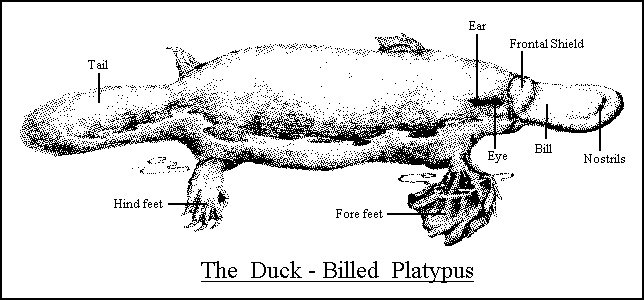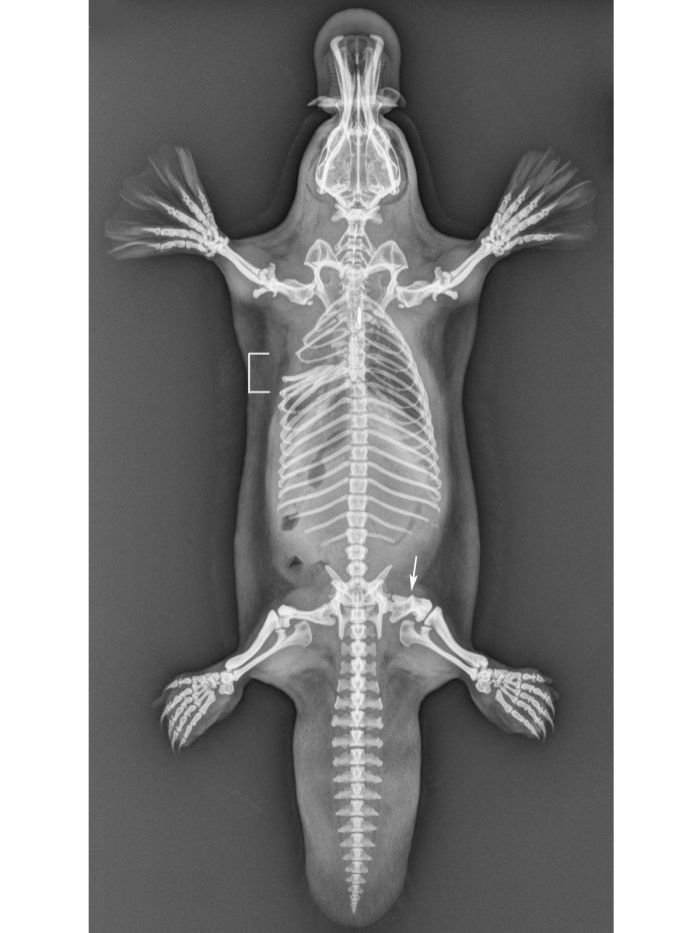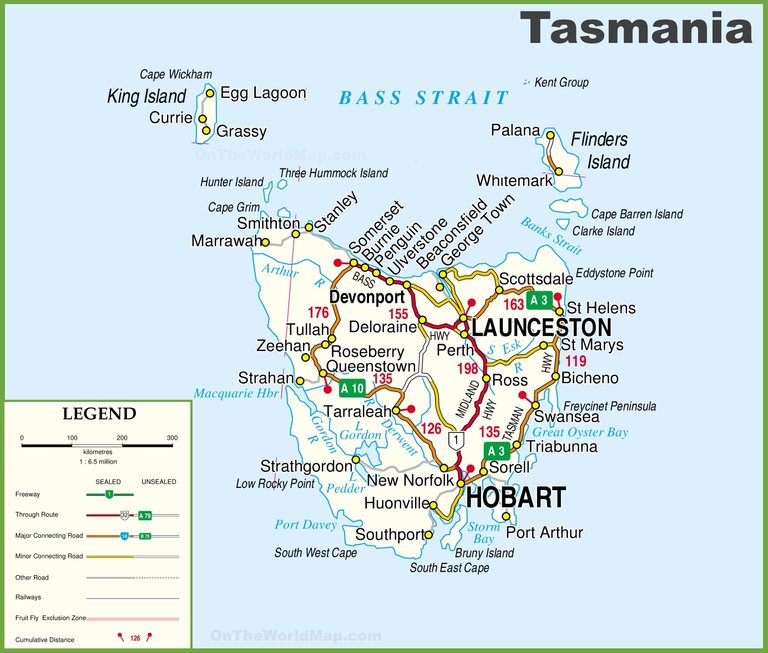Hi Steemit family!
Today I bring you a little about the life of one of nature's most extraordinary and fascinating animals, it looks like an animal taken from a fictional tale and the characteristics of its body are amazing because it brings together forms of other mammal and oviparous species, it is the famous platypus, an Australian animal that has amazing science and the whole world.
Nature is an enormous laboratory, and it seems that one of its strangest inventions is the platypus, a rare animal, because although it is a mammal, it lays eggs, has a duck's mouth, beaver's tail and otter's legs. It is also poisonous.
The platypus is an astonishing animal that seems to come out of a fictional film about biological experiments. However, it was discovered in 1978 by Europeans.
It has a beak like the duck and a tail like the beaver, although unlike the beaver it is not used to propel itself in the water, only to guide itself. It also serves as a fat store.
It usually has a brown color on its back and sides of the head, but in the part of its belly is a gray color or similar to blond.
This rare specimen can measure up to 50 cm in males and about 43 cm in females. They also have a spur on the legs that in the case of males is poisonous, capable of killing small animals, although it is difficult for a healthy person to die from this poison if it generates a strong pain that cannot be calmed even with the most powerful painkillers.
In spite of being a mammal, it reproduces by means of eggs. In short, an amazing animal, so much so that Australia -where it originates- has used it many times as an emblem. Without a doubt, nature still has many surprises in store for us.
Classification:
The Latin scientific name of the platypus is Ornithorhynchus anatinus. This was not really its first name. George Shaw, a naturalist at the British Museum, proposed calling it Platypus anatinus which means with flat feet similar to a duck. But the name Platypus was already "taken" for a genus of beetles. The German J.F. Blumenbach, who had received in parallel another specimen of platypus, proposed another name: Ornythorhynchus paradoxus, which means with the snout of a paradoxical bird. In taxonomy the rules give priority to the oldest name, that of Shaw. But since Platypus could no longer be put, the genus was adopted by the name proposed by Blumenbach, Ornythorhynchus, and the specific name of Shaw, anatinus, was kept. As a curiosity, in English platypus is said...platypus. Taxonomically the platypus belongs to the order of monotremes. And what are monotremes? They are oviparous mammals, which lay eggs.
The order of monotremes integrates two families: taquiglósidos and ornitorrínquidos. Within the taquiglósidos there are four species: the short snout equidna, which inhabits Oceania; and three species of zaglosos or long snout equidnas, which live primarily in New Guinea. In the platypus family, the only species is our protagonist today. Therefore there are only five species of egg-laying mammals.
DESCRIPTION
Let's try to describe our friend. He can measure between 30 and 60 centimeters in length and the males weigh between 1 and 2.5 kilograms and the females 0.7 and 1.6 kilograms.
It has a flat wide beak, on a relatively small head. The beak is covered by smooth skin. These animals do not have ears and their eyes are also small. In addition, it has abazones, such as hamsters (leather bags in the mouth used to store food). Young specimens have teeth that are lost in adulthood. The body is covered by a thick, water-resistant skin. It is dark brown on the back and whitish on the belly. It has short, webbed legs with long fingernails. It has a wide tail that is used, among other things, as a fat store.
HABITAT
The platypus lives in Australia. Specifically, we can find him in the east and Tasmania, as we see on the map
Our protagonist always lives in areas of freshwater: lakes, lagoons, rivers, streams ... Their burrows are quite complicated tunnels, with many galleries excavated in the banks of the rivers. Another curious fact is that females frequently dig two different burrows. One for the offspring and another for the male and herself.
BEHAVIOUR AND FEEDING
To continue with the rarity of this animal, it must be said that it is a semi-aquatic mammal. Although its burrows are on land, it spends most of its time swimming, an activity for which it is perfectly prepared. It is a rather nocturnal animal with solitary habits. When submerged in the water, its eyes and ears are protected by a membrane and orientated by the sensory organs present in its beak. On land, it develops with slow movements and generally crawling with its belly.
It feeds mainly on small crustaceans and freshwater mollusks. It also eats tadpoles, insect larvae, fish eggs... It is capable of investing in a single day an amount of food equivalent to its body weight. A new curiosity of the platypus: it has electroreceptors in its beak that it uses to detect its prey. Thanks to these sensors they are able to detect the electromagnetic fields generated by other animals. This helps them to detect their prey as well as possible predators.
REPRODUCTION
Both males and females have several sexual partners. Females reach sexual maturity at around two years of age. After mating (once a year, aquatic) the female digs a burrow to lay eggs. Approximately 21 days after mating, females lay one to four eggs, which hatch 10 to 14 days later.
Females lack nipple breasts (one more rarity and they go...). How do they suckle their young then? The mammary glands secrete the milk that transpires through the pores of the skin (as if it were sweat). Newborns lick the milk from the female's abdominal grooves.
POISONOUS
Almost to the end, we have left a (pen)last curiosity. The males have on their hind legs a spur that secretes venom. It is not the only poisonous mammal, but it is the only one that does not secrete the venom through the bite. Its venom is moderately toxic. It is capable of killing small mammals and in people produces various reactions usually skin.
Thank you for reading 😊

If you want to read my latest articles about art, click on these links:
➲ Amazing nature #5 - 🦋 butterflies and wonderful metamorphosis 🦋
➲ Amazing nature #4 - Fireflies and Bioluminescence
➲ Amazing nature #3 - 🌼 Why do flowers have color? 🌼
➲ Amazing nature #2 - 🐝 Bees and its valuable collaboration with the planet 🐝
➲ Amazing nature #1 - Learn with me some surprising things about flamingos 💗! Part 2/2
➲ Amazing nature #1 - Learn with me some surprising things about flamingos 💗! Part 1/2

If you liked reading this article, feel free to FOLLOW ME, UPVOTE and RESTEEM! It's always appreciated =D. Thank you all for your support and see you soon for the news flamingirl's adventures!













I never seen this kind of blog before... Really amazing dear keep it up 😄 today i learn a lot of things about platypus...
Thank you so much for stopping by!
I'm really glad to hear it!
Have a nice day my friend =D
Wow. Sooopppeerrr
Thanks!!!!!!
Hi, @flamingirl!
You just got a 0.18% upvote from SteemPlus!
To get higher upvotes, earn more SteemPlus Points (SPP). On your Steemit wallet, check your SPP balance and click on "How to earn SPP?" to find out all the ways to earn.
If you're not using SteemPlus yet, please check our last posts in here to see the many ways in which SteemPlus can improve your Steem experience on Steemit and Busy.
Congratulations @flamingirl! You have completed the following achievement on the Steem blockchain and have been rewarded with new badge(s) :
Click here to view your Board of Honor
If you no longer want to receive notifications, reply to this comment with the word
STOPTo support your work, I also upvoted your post!
Do not miss the last post from @steemitboard: